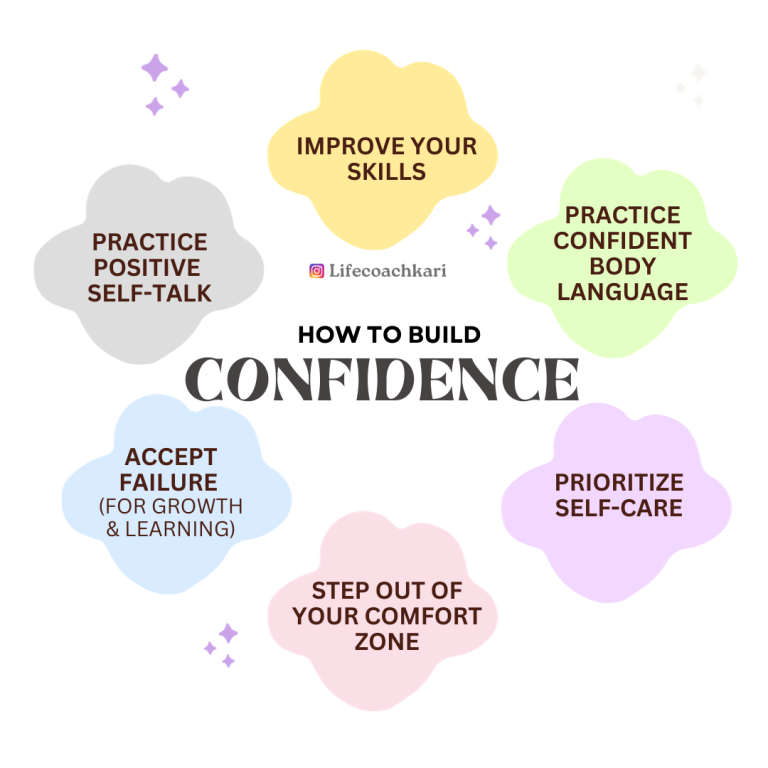Signs Of Nervousness Body Language
Have you ever wondered how you can tell if someone is feeling nervous? Well, let me tell you, it’s all in the body language! When people are nervous, their bodies often give away subtle signs that reveal their inner feelings. In this article, we’re going to explore the fascinating world of signs of nervousness body language. So get ready to uncover the secret cues and gestures that can indicate when someone is feeling a little jittery.
You know that feeling of butterflies in your stomach when you’re nervous? Well, it turns out that our bodies have a way of showing those nervous feelings on the outside too! From fidgeting and sweaty palms to avoiding eye contact or tapping your foot, these are all clues that could give away someone’s anxiety. So if you’ve ever wondered how to spot the signs of nervousness in someone’s body language, you’ve come to the right place.
But why is it important to understand these signs? Well, being able to read someone’s body language can help us be more empathetic and understanding. It allows us to connect with others on a deeper level and offer support when they need it most. So let’s dive into the world of signs of nervousness body language and learn how to decipher the hidden messages our bodies send when we’re feeling a bit uneasy. Get ready for a fascinating journey into the world of non-verbal communication!
Spotting signs of nervousness through body language is an important skill. When someone is feeling anxious, their body often reveals it through certain cues. Look for fidgeting, avoiding eye contact, trembling hands, or crossed arms. These subtle indicators can help you understand someone’s emotional state better. Paying attention to body language can enhance your communication skills and improve your relationships. Remember, nonverbal cues speak louder than words!

Signs of Nervousness Body Language: Unlocking Non-Verbal Cues
In today’s fast-paced and high-stress world, it’s important to be able to read and understand the signs of nervousness. Body language can be incredibly revealing, allowing us to gain insight into someone’s emotional state even when they may not be explicitly expressing it verbally. Nervousness is a common emotion that can affect people in various situations, from job interviews to first dates. By learning to recognize the signs of nervousness through body language, we can better understand others and adjust our own behaviors accordingly. In this article, we will explore the different manifestations of nervousness in body language and how to interpret them effectively.
1. Posture and Body Movements
Our posture and body movements can provide valuable clues about our emotional state, including nervousness. When someone is feeling nervous, they may exhibit certain postures such as hunching their shoulders, crossing their arms tightly, or avoiding eye contact. These defensive postures signify a desire to protect oneself and create a psychological barrier. Additionally, individuals may display fidgety behaviors like tapping their feet, wringing their hands, or frequently adjusting their clothing. Subtle movements like these reflect a restless and unsettled state of mind. It is important to note that these cues may differ from person to person, but observing patterns can help us identify nervousness in others.
One of the most telling signs of nervousness is the inability to maintain stillness. A nervous person may sway back and forth, pace around, or exhibit shaky movements. These restless actions are indicative of the internal turmoil that comes with being nervous. Furthermore, one’s overall body posture may be tense and rigid, as if they are bracing themselves for something. By paying attention to these physical cues, we can gain valuable insights into someone’s emotional state.
2. Facial Expressions and Eye Contact
Our facial expressions speak volumes about our emotions, and nervousness is no exception. When someone is nervous, they may display certain facial expressions that betray their inner discomposure. These expressions can include raised eyebrows, a tense jaw, lip biting, or a forced smile. These subtle cues indicate tension and anxiety. Additionally, people who are nervous often avoid direct eye contact or frequently glance around as if seeking an escape route. Lack of eye contact suggests unease and a desire to retreat from the situation.
Moreover, micro-expressions can offer valuable insights into a person’s nervousness. These fleeting, involuntary expressions can reveal true emotions that may be momentarily concealed. Look out for quick flashes of fear, widened eyes, or a tightening of the lips. Recognizing and understanding these micro-expressions allows us to connect with others on a deeper level, picking up on their true feelings and adjusting our approach accordingly.
3. Speech Patterns and Vocal Cues
When it comes to nervousness, our speech patterns and vocal cues provide important clues. People who are nervous may experience changes in their voice, such as higher pitch, uneven tone, or a quivering quality. These vocal cues are an involuntary response to heightened anxiety and reflect the inner turmoil being experienced. Pauses, stuttering, and rapid speech can also indicate nervousness, as the person struggles to find the right words or rushes to fill the silence.
Furthermore, specific speech patterns can reveal nervousness. For instance, someone may excessively use fillers like “uh” and “um” or repeat certain phrases or words. These linguistic patterns indicate a cognitive overload and the individual’s difficulty in organizing their thoughts due to nervousness. By listening attentively to these verbal cues, we can gain valuable insights into someone’s state of mind.
4. Significance of Hand Gestures
Hand gestures play a significant role in conveying emotions, and nervousness is no exception. People who are nervous often find themselves fidgeting with their hands, whether it’s wringing them together, tapping their fingers, or playing with small objects. These unconscious movements reflect anxiety and a need to release excess energy. Additionally, individuals may use self-soothing hand gestures like touching their face, rubbing their palms, or scratching their neck. These actions provide comfort and act as a way to alleviate nervous tension.
It’s also important to pay attention to the subtleties of hand gestures. For example, clenched fists or tightly interlaced fingers indicate heightened tension and a desire to control one’s emotions. Conversely, a limp or shaky handshake can be a sign of nervousness when meeting new people or in high-pressure situations. By observing these hand gestures, we can gain insights into someone’s emotional state and respond with empathy and understanding.
5. Signs of Nervousness in Legs and Feet
Our legs and feet can be reliable indicators of nervousness, albeit often subconscious. When someone is feeling nervous, they may display certain behaviors with their legs and feet that reveal their inner unease. For instance, restless leg movements like shaking or bouncing indicate pent-up energy and a desire to release tension. Additionally, crossed legs with rapid foot tapping or bouncing can be a sign of nervousness.
Another significant cue is the direction of one’s feet. When people are comfortable and at ease, their feet tend to be pointed towards the person or object of interest. However, when feeling nervous or uncomfortable, individuals may involuntarily point their feet towards the exit or away from the center of attention. This subtle shift in body language reflects the desire to escape or withdraw from the situation.
6. The Impact of Personal Grooming
Personal grooming habits can also be influenced by nervousness. When someone is feeling anxious, they may engage in excessive grooming behaviors, such as smoothing their hair, adjusting their clothing frequently, or repeatedly checking their appearance in reflective surfaces. These actions are often an attempt to distract oneself from feelings of unease and regain a sense of control. Furthermore, nervousness can trigger excessive sweating, leading individuals to wipe their palms or forehead frequently.
Moreover, nervous individuals may unconsciously touch or cover certain areas of their body, such as their neck, chest, or face. These acts are self-soothing gestures that provide comfort and a sense of security in stressful situations. By recognizing these grooming behaviors, we can better understand someone’s emotional state and offer support if needed.
7. The Role of Proxemics
Proxemics refers to the study of personal space and the distance people keep between themselves and others in social interactions. Understanding proxemics can shed light on nervousness during interpersonal communication. When someone is nervous, they may exhibit unusual proxemic behaviors, such as standing too close or too far away from others. These deviations from the social norms are often a result of discomfort and a desire to control the level of interaction.
Additionally, nervous individuals may involuntarily create physical barriers by crossing their arms or placing objects between themselves and others. These actions indicate a need for psychological space and protection from potentially uncomfortable situations. By being mindful of these proxemic cues, we can adjust our own behaviors and create a more comfortable and supportive environment.
The Power of Non-Verbal Communication: Connecting Beyond Words
Understanding the signs of nervousness body language provides us with a valuable tool to connect with others on a deeper level. By reading and interpreting non-verbal cues, we can gain insights into someone’s emotional state, allowing us to respond with empathy, understanding, and support. However, it’s important to remember that body language is just one piece of the puzzle and should be considered in conjunction with other contextual factors. By honing our observation skills and staying attuned to the non-verbal expressions of those around us, we can create more meaningful and authentic connections. So, the next time you find yourself in a situation where nervousness may be present, pay attention to the body language cues and unlock a world of hidden emotions.
Signs of Nervousness Body Language
Key Takeaways:
- Increased fidgeting, like tapping fingers or bouncing legs.
- Avoiding eye contact or looking down when speaking.
- Fidgeting with hair or clothes, like twirling hair or adjusting shirt.
- Speaking quickly and stumbling over words.
- Restlessness, like pacing back and forth or shifting weight.
Frequently Asked Questions
Welcome to our FAQ section on signs of nervousness through body language!
Nervousness can manifest in various ways, and body language is a great indicator. In this section, we’ll explore some common questions related to signs of nervousness and how it can be observed through body language.
1. How can I tell if someone is nervous just by observing their body language?
When trying to identify signs of nervousness through body language, look for specific cues such as fidgeting, avoiding eye contact, or excessive sweating. These behaviors indicate discomfort or anxiety. Additionally, crossed arms, biting nails, or even a shaky voice might signal nervousness. Paying attention to these nonverbal cues can help you identify if someone is feeling nervous.
However, it is important to note that these signs alone do not provide a definitive answer. It’s essential to consider other context clues and individual differences before making any judgments.
2. Can body language differ based on cultural norms when expressing nervousness?
Yes, body language can indeed vary across different cultures when it comes to expressing nervousness. While some cues like avoiding eye contact or fidgeting might be consistent globally, other gestures may differ. For example, in some cultures, excessive smiling or laughter might be a defense mechanism in nerve-wracking situations.
It’s crucial to be mindful of cultural differences in interpreting body language. What might be perceived as nervousness in one culture could be a completely normal behavior in another. Being open-minded and understanding these nuances is essential to avoid misinterpretations.
3. Can nervous body language be mistaken for other emotions or personality traits?
Absolutely. Nervous body language can sometimes be misinterpreted as signs of other emotions or personality traits. For instance, someone who is naturally introverted or shy might exhibit similar nonverbal cues, even when they aren’t necessarily feeling nervous. Similarly, individuals dealing with social anxiety might display signs that are often associated with nervousness, such as avoiding eye contact or fidgeting.
Therefore, it’s crucial to consider the context and other factors when trying to understand someone’s body language accurately. Engaging in open and empathetic communication can help clarify any misconceptions.
4. Are there any gender differences in the way nervousness is expressed through body language?
While there is no definitive rule, there might be slight differences in how men and women express nervousness through body language. Men, for instance, may display signs of nervousness through physical tension or holding their bodies rigidly. On the other hand, women might exhibit more subtle cues like hair twirling or playing with jewelry when feeling nervous.
However, it’s important to remember that these observations are not universal and can vary from person to person. It’s always best to avoid generalizations and focus on individual cues rather than making assumptions based on gender.
5. Can nervousness be controlled or minimized through conscious body language adjustments?
Yes, conscious body language adjustments can help control or minimize nervousness to some extent. Techniques such as deep breathing, maintaining open and relaxed postures, and making deliberate eye contact can help convey confidence and reduce nervousness. Additionally, practicing and becoming familiar with your body language in nerve-wracking situations can also contribute to managing nervousness better.
However, it is important to note that body language adjustments alone might not completely eliminate nervousness, as it is a complex emotion influenced by various factors. Combining body language techniques with other strategies like self-care, positive self-talk, and seeking support from others can lead to more effective management of nervousness.
Summary
When someone is nervous, their body can show signs that give it away. These signs include fidgeting, sweating, avoiding eye contact, and speaking quickly. Body language can help us understand how someone is feeling, even when they don’t say it with words. It’s important to pay attention to these signs to better understand and support others.
Key Takeaways
– Nervousness can be revealed through body language cues like fidgeting and sweating.
– Avoiding eye contact and speaking quickly are also signs of nervousness.
– Understanding and noticing these signs can help us better support and communicate with others.

